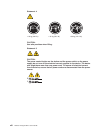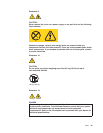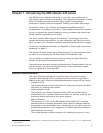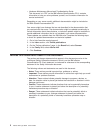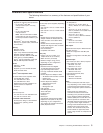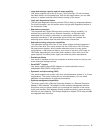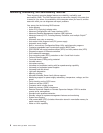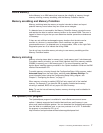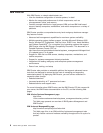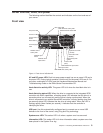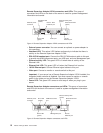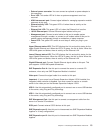
Reliability,
availability,
and
serviceability
features
Three
important
computer
design
features
are
reliability,
availability,
and
serviceability
(RAS).
The
RAS
features
help
to
ensure
the
integrity
of
the
data
that
is
stored
in
your
server,
the
availability
of
the
computer
when
you
need
it,
and
the
ease
with
which
you
can
diagnose
and
repair
problems.
Your
server
has
the
following
RAS
features:
v
Active
Memory
v
Active
PCI-X
(hot-plug)
adapter
slots
v
Advanced
Configuration
and
Power
Interface
(ACPI)
v
Advanced
Desktop
Management
Interface
(DMI)
features
v
Advanced
memory
ECC,
including
Memory
ProteXion,
and
multiple
Chipkill
™
capability
v
Automatic
error
retry
or
recovery
v
Auto-restart
initial
program
load
(IPL)
power
supply
v
Automatic
server
restart
v
Built-in,
menu-driven
Configuration/Setup
Utility
and
diagnostic
programs
v
Customer-upgradable
basic
input/output
system
(BIOS)
code
v
DDR
SDRAM
with
serial
presence
detect
(SPD)
and
vital
product
data
(VPD)
v
Diagnostic
support
of
Ethernet
controllers
v
Error
codes
and
messages
v
Error
correcting
code
(ECC)
protection
on
the
L3
and
XceL4
cache
v
Failover
Ethernet
support
v
Front-side
buses
(FSBs)
parity
protected
v
Hot-add
memory
v
Hot-replace
memory
v
Hot-swap
and
redundant
cooling
with
fan
speed-sensing
capability
v
Hot-swap
and
redundant
power
supplies
v
Hot-swap
hard
disk
drives
v
Light
path
diagnostics
v
Memory
mirroring
v
Microsoft
Windows
Server
family
failover
support
v
Monitoring
support
for
power-supply
redundancy,
temperature,
voltage,
and
fan
speed
v
Parity
checking
on
the
SCSI
buses
v
Power-on
self-test
(POST)
v
Processor
serial
number
access
v
Read-only
memory
(ROM)
checksums
v
Remote
Supervisor
Adapter
or
Remote
Supervisor
Adapter
II-EXA
to
enable
remote
server
management
v
Standard
cable
presence
detection
v
Standby
voltage
for
systems-management
features
and
monitoring
v
System
error
logging
v
Vital
product
data
(VPD)
(includes
information
stored
in
nonvolatile
memory
for
easier
remote
viewing)
v
Wake
on
LAN
®
capability
6
xSeries
445
Type
8870:
User’s
Guide



